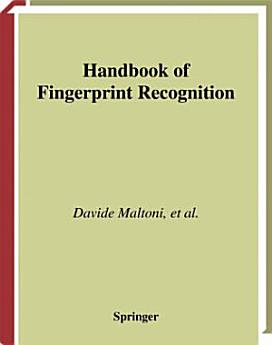Handbook of Fingerprint Recognition
אפר׳ 2006 · Springer Science & Business Media
5.0star
ביקורת אחתreport
ספר דיגיטלי
351
דפים
reportהביקורות והדירוגים לא מאומתים מידע נוסף
מידע על הספר הדיגיטלי הזה
Overview Biometric recognition refers to the use of distinctive physiological and behavioral character- tics (e. g. , fingerprints, face, hang geometry, iris, gait, signature), called biometric identifiers or simply biometrics, for automatically recognizing a person. Questions such as “Is this person authorized to enter the facility?”, “Is this individual entitled to access the privileged infor- tion?”, and “Did this person previously apply for a job?” are routinely asked in a variety of organizations in both public and private sectors. Because biometric identifiers cannot be easily misplaced, forged, or shared, they are considered more reliable for person recognition than traditional token- (e. g. , keys) or knowledge- (e. g. , password) based methods. Biometric recognition can provide better security, higher efficiency, and increased user convenience. It is for these reasons that biometric systems are being either increasingly deployed or evaluated in a large number of government (e. g. , welfare disbursement, national ID card, issuing of driver’s license) and civilian (e. g. , computer network logon, automatic teller machine, cellular phone, Web access, smartcard) applications. A number of biometric technologies have been developed and several of them are being used in a variety of applications. Among these, fingerprints, face, iris, speech, and hand - ometry are the ones that are most commonly used. Each biometric has its strengths and we- nesses and the choice of a particular biometric typically depends on the requirements of an application.
דירוגים וביקורות
5.0
ביקורת אחת
רוצה לדרג את הספר הדיגיטלי הזה?
נשמח לשמוע מה דעתך.
איך קוראים את הספר
סמארטפונים וטאבלטים
כל מה שצריך לעשות הוא להתקין את האפליקציה של Google Play Books ל-Android או ל-iPad/iPhone. היא מסתנכרנת באופן אוטומטי עם החשבון שלך ומאפשרת לך לקרוא מכל מקום, גם ללא חיבור לאינטרנט.
מחשבים ניידים ושולחניים
ניתן להאזין לספרי אודיו שנרכשו ב-Google Play באמצעות דפדפן האינטרנט של המחשב.
eReaders ומכשירים אחרים
כדי לקרוא במכשירים עם תצוגת דיו אלקטרוני (e-ink) כמו הקוראים האלקטרוניים של Kobo, צריך להוריד קובץ ולהעביר אותו למכשיר. יש לפעול לפי ההוראות המפורטות במרכז העזרה כדי להעביר את הקבצים לקוראים אלקטרוניים נתמכים.





